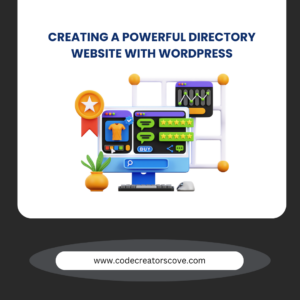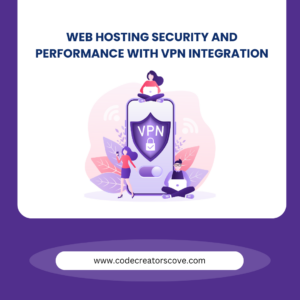In the digital age, email remains one of the most effective tools for marketing, allowing businesses to connect directly with their audience. However, the manual effort involved in crafting and sending individual emails can be overwhelming and inefficient. Automated email marketing offers a powerful solution, enabling businesses to send targeted, personalized emails with minimal effort. In this article, we’ll explore how to maximize success with automated email marketing, providing strategies to boost engagement and drive growth.
What is Automated Email Marketing?
Automated email marketing is the use of software to automatically send emails to subscribers based on specific triggers or predefined schedules. Understanding the basics of automated email marketing is essential before exploring how it can be effectively utilized. These triggers might include user actions, such as signing up for a newsletter, making a purchase, or abandoning a shopping cart. By automating these processes, businesses can maintain regular contact with their audience without the need for manual intervention.
The Benefits of Automated Email Marketing
Automated email marketing offers a range of benefits that can significantly enhance your marketing efforts and overall business performance. Here’s how automated email marketing can transform your business:
1. Increased Efficiency: Automated email marketing streamlines your communication efforts, allowing you to focus on other important aspects of your business. Once set up, these automated campaigns run in the background, continuously working to engage your audience without requiring ongoing effort.
2. Enhanced Personalization: Automation tools allow you to segment your audience and send personalized emails based on specific behaviors, preferences, or demographics. Personalized emails are more relevant to the recipient, leading to higher open rates, click-through rates, and conversions.
3. Consistent Communication: Consistency is key in marketing. Automated email campaigns ensure that your audience receives regular and timely messages, keeping your brand top-of-mind and fostering stronger relationships with your subscribers.
4. Scalability: As your business grows, managing email communications manually becomes increasingly difficult. Automated email marketing scales with your business, allowing you to maintain personalized communication with a large audience without additional effort.
5. Data-Driven Insights: Automated email platforms provide valuable analytics that help you understand your audience’s behavior and preferences. These insights enable you to refine your campaigns, optimize your strategies, and improve your overall marketing performance.
Essential Automated Email Campaigns
To get the most out of automated email marketing, it’s important to implement the right types of campaigns. Let’s explore some of the most essential automated email campaigns every business should have in their strategy:
1. Welcome Series: The welcome series is your first opportunity to make a strong impression on new subscribers. It typically includes a series of emails that introduce your brand, highlight your products or services, and encourage the subscriber to take the next step, whether that’s making a purchase or exploring more about your business.
2. Abandoned Cart Reminders: Cart abandonment is a common challenge in e-commerce. Automated abandoned cart emails remind customers of the items they left behind, encouraging them to complete their purchase. These emails often include product images, descriptions, and incentives like discounts or free shipping to entice customers back to their carts.
3. Re-engagement Campaigns: Over time, some subscribers may become inactive. Re-engagement campaigns target these dormant subscribers with special offers, content tailored to their interests, or simply a message asking if they’d like to remain on your list. This helps to maintain a healthy, engaged email list and can rekindle interest in your brand.
4. Post-Purchase Follow-Ups: After a customer makes a purchase, sending a post-purchase email is a great way to show appreciation, confirm the order details, and suggest related products. These emails can also ask for feedback or reviews, helping to build trust and encourage repeat business.
5. Event or Product Launch Announcements: Automated emails can be highly effective for announcing new products, services, or upcoming events. By scheduling these emails in advance, you can create anticipation and ensure that your audience is well-informed and ready to engage when the time comes.
Proven Strategies for Achieving Optimal Results
To truly maximize the success of your automated email marketing, following best practices is essential. Here are some key strategies to keep in mind:
1. Segment Your Audience: Audience segmentation is crucial for delivering relevant content. Divide your subscribers into segments based on factors like purchase history, location, behavior, or demographics. This allows you to tailor your messages to the specific needs and interests of each group, improving engagement and conversion rates.
2. Craft Compelling Subject Lines: Your subject line is the first thing recipients see, and it plays a crucial role in whether your email gets opened. Keep subject lines clear, concise, and engaging. Personalize them when possible and consider A/B testing different versions to see what resonates best with your audience.
3. Ensure Mobile Optimization: A significant portion of emails is opened on mobile devices, so it’s essential to optimize your emails for mobile viewing. Use responsive design, large fonts, and clear CTAs that are easy to tap on a small screen.
4. Continuously Test and Optimize: Testing is key to improving your email marketing performance. Regularly test different elements of your emails, such as subject lines, copy, images, and CTAs, to identify what works best. Use data-driven insights to refine your approach and make informed decisions.
5. Maintain Compliance: Ensure your email marketing practices comply with regulations such as GDPR and CAN-SPAM. This includes obtaining explicit consent from subscribers, providing a clear opt-out option, and including your business’s contact information in every email. Compliance not only keeps you out of legal trouble but also builds trust with your audience.
Common Mistakes to Avoid
Even with the best intentions, it’s easy to make mistakes in automated email marketing. Being aware of common pitfalls can help you avoid them and achieve better results. Here are some mistakes to watch out for:
1. Over-Automation: While automation can save time, it’s important not to over-automate. Emails that feel too robotic or impersonal can turn off subscribers. Maintain a human touch by personalizing messages and regularly reviewing your automated workflows to keep them relevant and engaging.
2. Neglecting Content Quality: Automation doesn’t excuse poor content. Your emails should be well-written, visually appealing, and valuable to your recipients. Quality content is key to keeping your audience interested and engaged.
3. Ignoring Metrics: Failing to monitor the performance of your automated campaigns can lead to missed opportunities for improvement. Regularly review key metrics such as open rates, click-through rates, and conversion rates to understand what’s working and what’s not. Use this data to refine your strategies and achieve better results.
Conclusion
Automated email marketing is a powerful tool for businesses looking to engage with their audience in a more efficient and personalized way. By implementing the right strategies and best practices, you can maximize the success of your automated email campaigns, driving higher engagement, increased conversions, and sustained growth. As you continue to refine your approach, remember that the key to successful email marketing lies in delivering relevant, timely, and valuable content that resonates with your audience.


